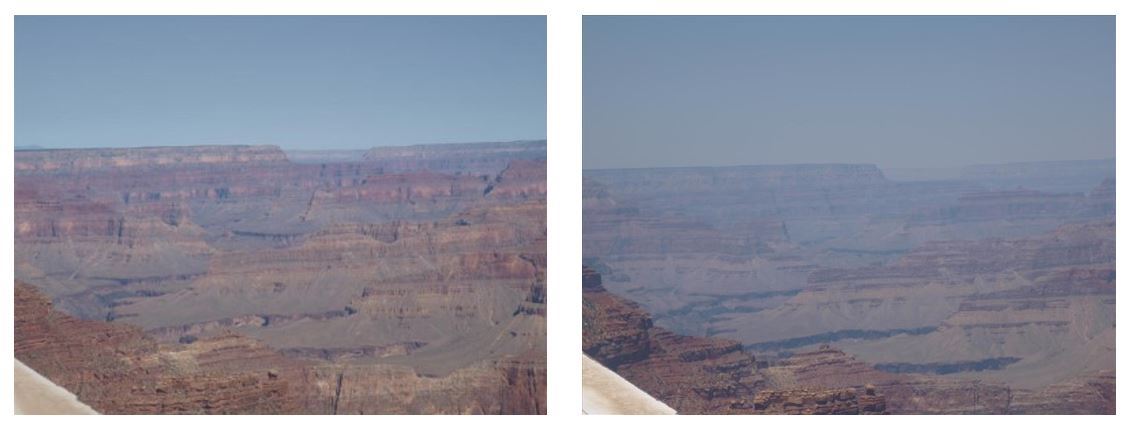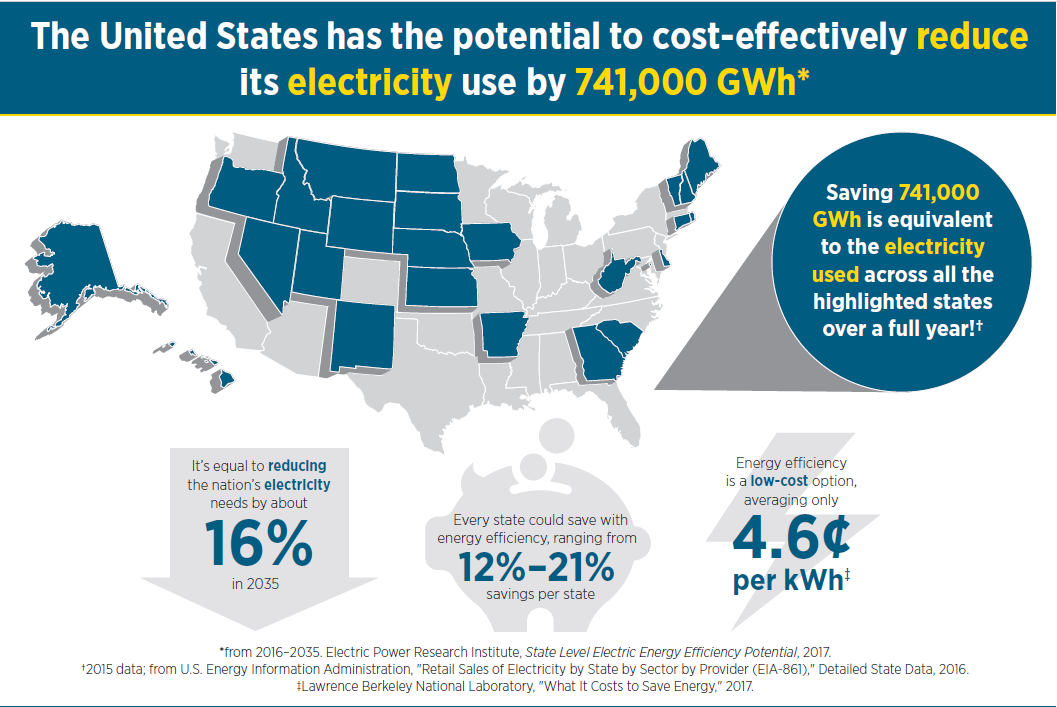Tourists visit our national parks to see the majestic vistas, not haze-obscured views. The two images of the Grand Canyon below illustrate this point: In the view on the left, one can see for more than 200 miles, while on the right, visibility is only about 60 miles. That’s because the view in the right-hand picture is obscured by air pollution, which also impairs public health and the environment.

Source: Grand Canyon National Park Webcam, Yavapai Point, Ariz.
This phenomenon is not unique to the Grand Canyon; the US National Park Service operates webcams at many national parks, and they document local visibility every day.
The Clean Air Act regulates lack of visibility due to pollution as “regional haze,” and since 1999 the federal government has required states to reduce it in national parks and wilderness areas. The pollutants that create regional haze come from vehicles, power plants, and other sources: nitrogen oxides (NOx), sulfur dioxide (SO2) and tiny airborne particles. This “particulate matter” (PM) is less than 2.5 microns in diameter, small enough to lodge in the lungs and damage them. (By comparison, a human hair is approximately 50 to 70 microns in diameter.) Historically, the power sector has been responsible for a significant portion of NOx, SO2, and PM emissions.
State air quality agencies are charged by the Environmental Protection Agency (EPA) with improving visibility in national parks and wilderness areas. States develop long-term plans to return visibility to natural conditions and have to update those plans soon. Thus far, states have relied primarily on adding pollution control equipment at power plants, which can be expensive and reduces the output of the facility, and each type of control equipment acts on only one or two air pollutants. Energy efficiency, however, can reduce emissions of all pollutants at once—and at a low cost. RAP is working with states to help them employ energy efficiency to meet federal visibility improvement obligations.
Many states are aggressively pursuing energy efficiency to reduce consumer costs, but they may be missing an opportunity to claim the air quality improvements that EE achieves. The potential is immense: One estimate, from the Electric Power Research Institute (EPRI), calculated that EE could save 741,000 GWh of power by 2035, enough to achieve at least a 16 percent reduction in electricity use in the United States, at a cost of less than 5 cents per kWh (about half the cost of generating electricity in parts of the country and about a third in other areas). One GWh is enough electricity to power more than 100,000 homes for a year.

The American Council for an Energy-Efficient Economy ranks states on their EE gains each year, along with those that have most improved their scores. Many states are achieving at least a 1 percent per year reduction in sales of electricity; the leading states are surpassing 2.5 percent per year. These energy reductions can translate into thousands of tons of avoided NOx, SO2, and PM emissions per year, depending on the emissions characteristics of the region’s utility grid. A good tool for quantifying these reductions is the EPA’s AVERT model, which estimates the emissions that can be avoided through energy efficiency and renewable energy. Using the AVERT model with the EE potential in EPRI’s work referenced above, for example, the Southeast states could avoid more than 80,000 tons of NOx, SO2, and PM per year. In the region that includes the Grand Canyon, AVERT suggests that EE could avoid almost 12,000 tons of NOx, SO2, and PM per year. In most states, achieving reductions of thousands of tons provides a good start toward the next phase of visibility improvements.
Along with improving air quality, energy efficiency has many other attributes. EE can reduce or delay the need for upgrades in transmission and distribution system infrastructure, and it provides a host of other environmental benefits, including improved water quality, reduced solid waste from fossil fuel extraction, and less land disruption. These advantages demonstrate why efficiency remains critical, even as renewable energy declines in cost—why RAP continues to emphasize “efficiency first.”
As air quality agencies work to meet their obligations for the next round of regional haze compliance plans, now is the time to explore how additional EE can help—by lowering electricity demand enough to improve visibility, decreasing the need to run high-emitting power plants, and avoiding additional emissions control costs for such units. If state environmental agencies work with their energy office and utility commission counterparts, it may be possible to align utility resource planning with the development of regional haze plans and other air quality improvement plans, as RAP envisions in E-Merge, a streamlined approach integrating energy and environmental regulation.
Please contact RAP if you’re interested in how EE can benefit your regional haze compliance plan. We can help you document how EE has reduced emissions in your state using the EPA’s criteria, as envisioned in its EE/RE Roadmap. We also have already outlined a variety of strategies for linking air quality and EE.
Just as you can see farther on a clear day at the Grand Canyon, taking a “longer view” of air quality management tools—and including energy efficiency—can help states clean up regional haze, meet energy goals, and save consumers money.

